Best classical guitars 2025: Our pick of top nylon-string, flamenco and hybrid acoustics
Your guide to the finest classical, flamenco, and hybrid guitars from big names including Yamaha, Cordoba, Godin, Taylor, and more
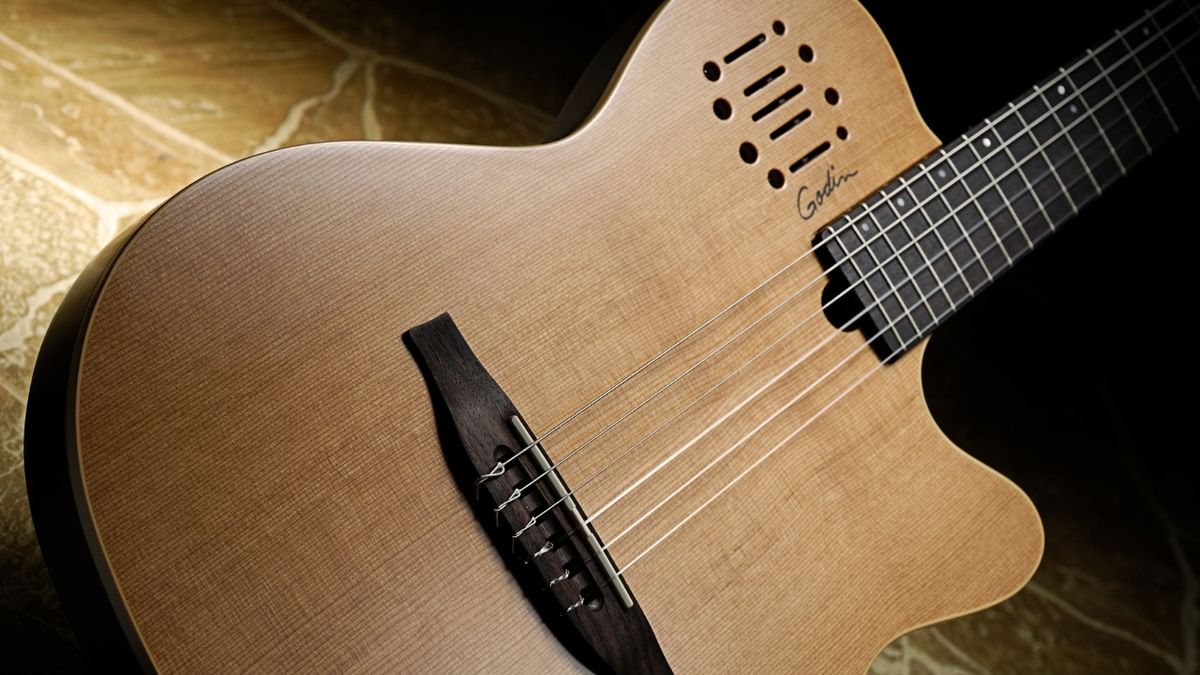
A classical isn't just some variant of a regular acoustic guitar, it's very much its own instrument, with a unique feel, sound, and required playing style. Whether you're new to classical, or you're looking for your next purchase, our choice of the best classical guitars covers the gamut of beginner-friendly to pro-level instruments.
If you're new to classical guitars, you'll want to look out for the wider neck width that might come as a surprise for those not used to this style of guitar. The strings are also typically spaced further apart to make it easier to fingerpick and use tremolo fingerpicking techniques, so it's something to bear in mind before you purchase. Much like regular acoustics you can get classical guitars with pickups and cutaways, as well as a 'crossover' classical guitar that feels more like a standard steel string guitar.
If you need any more help deciding what to go for, go check out our FAQs section which features loads more common queries answered by the experts here at MusicRadar. To see our top picks sorted by use case, just keep scrolling...
Our top picks
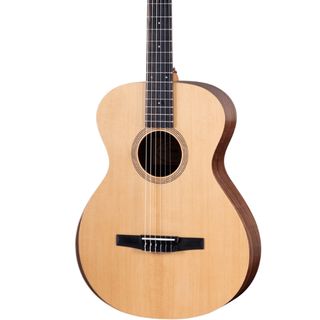
For its playability, price, and superb tone, we love the Taylor Academy 12e-N. It’s got a really slick neck profile, good intonation and it sounds beautiful. It’s articulate and versatile, working for pretty much any acoustic genre you can throw at it.
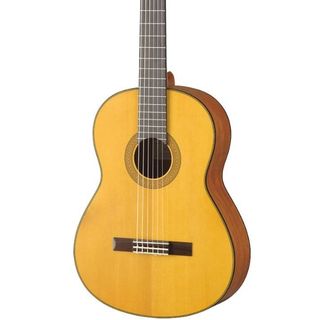
For the best starter classical, the Yamaha CG122MSH blends affordability and quality. Featuring a solid spruce top that helps yield a bright but balanced tone, it’s ideal for those wanting to get started in the world of classical music.
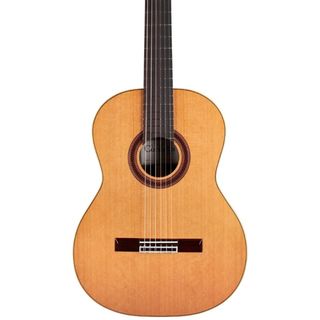
If you're looking to study Flamenco-style guitar playing, then we'd go for the Cordoba F7 Paco Flamenco. It's a lot of instrument for the money with a solid top, low and easy-to-play action, plus a handy tap plate, great for nailing your rasgueado.
Best overall
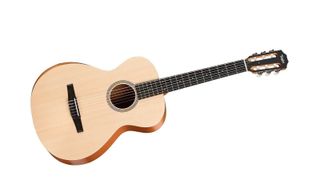
Specifications
Reasons to buy
Reasons to avoid
The Academy line offers a Taylor guitar without the hefty price-tag, making, as Taylor says, the “acoustic guitar accessible to more players.” But the Academy 12e-N is accessible in all kinds of ways. First off, it’s compact, and as the firm's smallest full-scale shape, the Grand Concert is the perfect size for a classical nylon-string.
The 12e-N could be considered a “crossover” nylon-string. It has an adjustable truss rod and a lightly radius’d fingerboard and a narrower neck (about 1/8” thinner across the nut than your typical 2” wide classical guitar), but its voice is classical with an open, responsive midrange. A hard percussive approach reveals a border-line flamenco voicing, while turning down the intensity showcases a more Latin-voicing that would work well with your bossanova or jazz-fusion chord book.
There are very few negatives. You’ve got a great neck shape, an accommodating size with a bevelled armrest – praise be! – and incredible playability. With its crisp, defined classical voice, that’s a winning combo.
Read the full Taylor Academy 12e-N review
Best for beginners
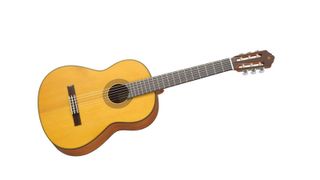
Specifications
Reasons to buy
Reasons to avoid
For beginners, or anyone looking for an affordable entry point into the world of nylon-string guitars, the CG122MS is a no-brainer. The CG122MS has been kicking about for years now because, once again, Yamaha has made it a point of pride that it can put together an entry-level guitar that performs well beyond its price point.
It has a full-size classical body, with a very classical 2.05” nut width and 2.28” spread at the bridge, and it feels great, with a really welcoming neck profile.
As for tone, well, tune in for a well-balanced voice that’s good and strong in the mids, with articulate high-end, and if it lacks just a little bit on the low-end it still out-performs many more expensive guitars. The CG122MS is available with a cedar top as well as the aforementioned spruce - offering a little more robust low-mid to the sound.
Read the full Yamaha CG122MS review
Best for flamenco
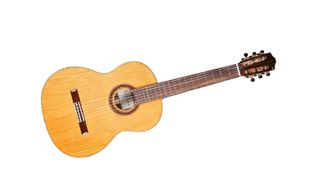
3. Cordoba F7 Paco Flamenco
Our expert review:
Specifications
Reasons to buy
Reasons to avoid
Built in honour of Paco de Lucia, the F7 Paco Flamenco is a punchy little guitar that strikes a balance between rounded low-end warmth and the precise high-end rat-a-tat needed for flamenco guitar.
The neck is solid mahogany, a comfortable 2.1” at the first fret and 2.4” at the 9th, and measures a full classical 2” in width across the nut. The action is low and easy, while the body’s depth (3.5” in the lower bout, 3.3” in the upper) aids both comfort and the brightness required of all good flamenco guitars. These dimensions just feel right.
It is a sumptuous instrument, especially at the price. There’s solid Canadian cedar on the top, with fan-style bracing to let your rasgueado really pop, and the all-important tap plate.
Best high-end
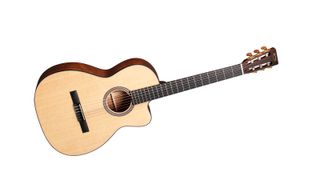
4. Martin 16 Series 000C12-16E Nylon
Our expert review:
Specifications
Reasons to buy
Reasons to avoid
With solid Sitka spruce on the top, solid mahogany on the back and sides, Martin has provided a mellower but equally classic take on Martin tone. Martin’s 000 auditorium body shape is one of the smallest they offer, and with a depth of 4.125”, it is easily applied to nylon-stringed adventures. The build is, of course, exceptional.
You’ll find the neck that little bit wider, encroaching on classical proportions at 1.875” across the nut, while the cutaway joins the body at the 16th fret. This allows easy upper fret access for soloing, and the Fishman Matrix VT Enhance NT1 pickup will help make those solos to pop while maintaining the rich, natural tone of the 000C12-16E.
The 000C12-16E is a considerable investment but the tone and build is exceptional. It feels incredible, too, with that high-gloss top off-set by a satin-smooth back, sides and neck.
Best with pickup
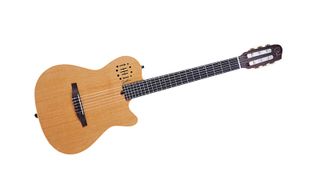
Specifications
Reasons to buy
Reasons to avoid
This is a classical hybrid that really comes into its own if you are playing gigs regularly and require an instrument that is going to serve you night after night in the most challenging environments.
The MultiAc Encore’s bread and butter is in delivering consistent amplified tone thanks to its EPM Dual Source electronics. The Dual Source refers to the under-saddle and soundboard transducers and you can choose how much you want of each in your signal. Indeed, finding the right mix for recording is a cinch, and despite the unorthodox presentation (no one’s mistaking this for a flamenco guitar) the MultiAc Encore is a triumph of practical guitar design.
The thinline grand concert body-shape super-comfortable and with a solid cedar top and silver leaf maple on the back and sides, it offers an excellent tonal platform and looks pretty darn neat too..
Read the full Godin MultiAc Nylon Encore review
Best crossover
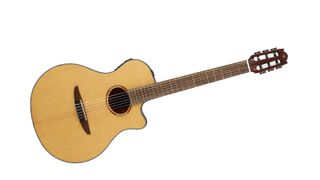
6. Yamaha NTX1 Acoustic/Electric Classical
Our expert review:
Specifications
Reasons to buy
Reasons to avoid
Yamaha's NX range dates back to 2009, when it offered players two similar but quite different guitars, the NCX and NTX. The NCX was more traditionally classical. It had a wider classical neck, the fingerboard was flat, and the neck joined the body at the 12th fret. The NTX had a narrower neck, a radius'd fingerboard and 14 frets to the body.
Both have been enduringly successful, but we’ve included the NTX1 here on the grounds that it’s ideal for winning over players of traditional acoustic guitars and electric players. The contemporary construction is immaculate. We love the thin neck profile. The acoustic sound is balanced, if a little on the quieter side, while plugged in the NTX1 is a natural, and sure to record.
Given that it’s not strictly traditional with its fingerboard, neck profile – and there’s dot inlays, a rare treat indeed for nylon – feel free to attack it with a pick a la Rodrigo Sanchez (he uses a custom NTX1200) or layer some effects over the top of it. The new Atmosfeel preamp electronics are superb, offering quack-free tones courtesy of an under-saddle piezo with individual string sensors, a transducer to capture top-end, and an internal microphone to round the signal out and give it some depth. Impressive.
More options...
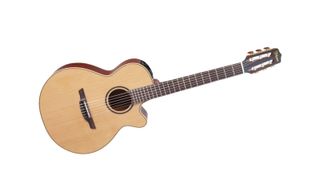
Specifications
Reasons to buy
Reasons to avoid
The P3FCN is another stage-friendly electro-acoustic from a Japanese brand that has built a formidable reputation for quality. Takamine’s CT4B II preamp offers sliding controls for 3-band EQ and volume. It sounds rich and naturalistic. The control panel also features an onboard chromatic tuner.
The P3FCN is another one that will play well to nylon-string newbies, with its 14-fret-to-the-body build and Venetian cutaway, wood dot inlay and 1.87” nut width offering a more traditional acoustic vibe.
Indeed, some nylon-string players might find that a little cramped, but that is a matter of preference. But no one is going to complain about the thin profile of the mahogany neck, or the luxurious feel of the bound rosewood fingerboard. All in all, it’s one impressive hybrid.
Read the full Takamine Pro Series P3FCN review
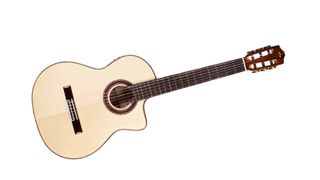
8. Cordoba GK Studio flamenco guitar
Our expert review:
Specifications
Reasons to buy
Reasons to avoid
With a solid European spruce top complementing a laminated cypress back and sides, The GK Studio is a ridiculously accomplished instrument for the price. Under that immaculate piece of spruce there is fan bracing to help that top to really resonate – it’s a classically Iberian build.
Tone-wise, the GK Studio’s acoustic voice is nicely balanced with the cypress laminate putting a little bottom-end on the spruce’s effervescence in the upper-mids.
But then the GK Studio, with its cutaway and Fishman pickup and preamp, has all the mod-cons you could want from an electro-nylon. There’s a phase switch, 3-band EQ, a tuner, volume, phase and notch controls to tame any unwanted feedback. The GK Studio is a hugely well-equipped instrument that won’t empty your bank account.
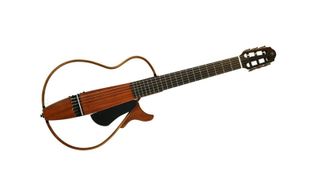
9. Yamaha SLG200S silent guitar
Our expert review:
Specifications
Reasons to buy
Reasons to avoid
Sure, the SLG200S is pretty avant-garde to look at, but it’s lightweight and super-playable; those more used to playing the electric will love it. Yamaha’s ground-breaking SLG200s Silent guitar is part of an extensive suite of instruments that eschew the idea of, y’know, having a body per se, and instead use a wooden frame with a solid-wood central core.
With clever onboard electronics which include an AUX input, two reverbs and a chorus, the idea is that the SLG200S can be plugged in for a feedback-free performance in the most uncompromising live settings, and also be used as an all-but-silent practice tool.
Think of it as a hollowed-out singlecut. It comes with a gig bag, but what’s also cool about this is that the frame is detachable, making it one of the most attractive options for travelling. Definitely a strong option for anyone who likes to be a bit different.
FAQs
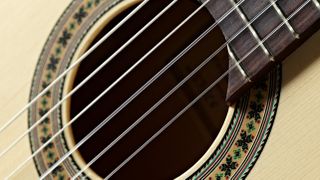
Do I need a classical, flamenco or hybrid guitar?
Though closely related, there are differences between classical and flamenco guitars that make each one more suitable to its style of music. With classical guitars, you generally want more sustain and a warmer, darker sound. Many of the best classical guitars have bracing that aids in this, as well as tonewoods that impart the right sort of tone.
Flamenco guitars on the other hand are typically slightly brighter sounding, with a faster and snappier attack. This makes sense, as flamenco music (and its similar musical derivatives) is often fast-paced, with the guitars acting almost as percussive instruments at times. Many flamenco guitars have a slightly thinner body when compared to a classical, and again, will be braced in such a way that helps their overall sound. You’ll likely get less sustain on a flamenco guitar too.
There are then guitars that combine features normally found on steel-string guitars with the construction and sound of nylon-stringed instruments. These so-called hybrid guitars offer the classical sound to players that might not get on with the traditional dimensions of a straight-up classical or flamenco guitar. Purists might want to look elsewhere though!
What tonewoods should I look out for?
With the best classical guitars, the most common tonewoods used for the top are spruce and cedar. It’s not quite as straightforward as ‘one wood for classical, the other for flamenco’, as pairing it with the right back and sides also has an impact on the instrument’s overall sound. Spruce, though, will normally lend the guitar a brighter sound, with a detailed and crisp top end. Spruce does tend to be quite balanced tonally, and is easily sourced, helping its popularity.
Cedar is both visually and tonally darker – there’s usually more going on the lower-mids than there is with spruce. It has a quick response and reacts well to fast picking and, whilst it sounds very full, it doesn’t quite project as much as spruce.
What should I consider in terms of nut width?
One aspect that can affect how the guitar feels under the fingers of both hands is nut width. A wider nut width is the norm on most nylon-strung guitars, with a full 2” being the average size. This means there is more space between each string, allowing you to get your fingers in the right position for various classical and flamenco right-hand techniques. Those making the jump over from electric or acoustic may need a little time adjusting, though there are guitars out there, like the aforementioned hybrids, that have a slightly narrower nut.
How we test
Much like we'd test any guitar, a classical guitar must pass several phases of testing before we'll consider it for inclusion in one of our guides. We like to test all of our guitars for at least a couple of weeks too, which allows us to really live with them and get an understanding of how it will fit into your daily life.
When we first get a new classical guitar to test, we'll begin by examining every inch of it. We're looking at the overall build quality, to see how well put together it is, and whether or not there are any defects in the finish and hardware.
Once it's passed a visual inspection we'll look at the feel and playability of the instrument in question. We'll try various playstyles and pieces from our classical and flamenco repertoire to test how comfortable the neck is. This also applies to picking styles, whether we're tremolo picking or using techniques like rasgueado, all have to be applied in order for us to get a good overview of how well-suited the instrument is to a particular use case.
Finally, we'll look at the sound. Having tested plenty of classical guitars over our time, we've got a great overview of what makes a great-sounding guitar. Of course, every guitar has a different voice, but we want to hear great projection, a balance across the EQ spectrum, and a rich harmonic complexity.
Find out more about how we test music gear and services at MusicRadar.
Related buyer's guides
MusicRadar's got your back
- And the best cheap acoustic guitars
- Freshen up with the best nylon guitar strings
- The best acoustic amps for buskers and gigging guitarists
- The best guitar capos for all budgets
- The best guitar cases and gig bags for protecting your gear
Get the MusicRadar Newsletter
Want all the hottest music and gear news, reviews, deals, features and more, direct to your inbox? Sign up here.
Jonathan Horsley has been writing about guitars and guitar culture since 2005, playing them since 1990, and regularly contributes to MusicRadar, Total Guitar and Guitar World. He uses Jazz III nylon picks, 10s during the week, 9s at the weekend, and shamefully still struggles with rhythm figure one of Van Halen’s Panama.
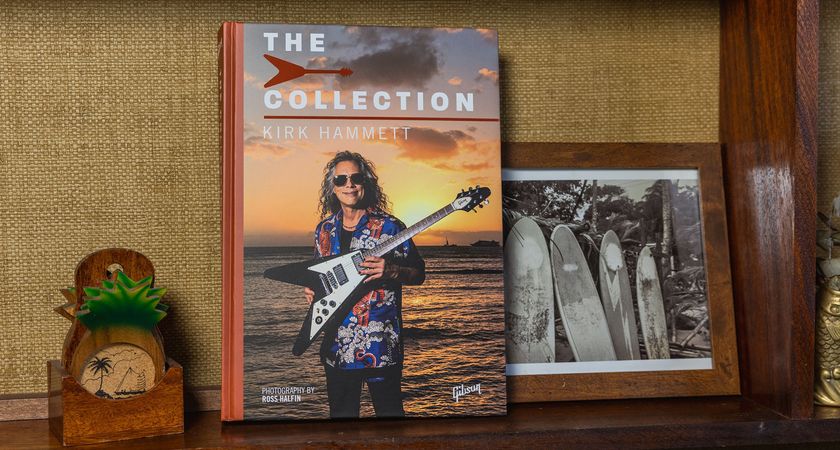
“The deepest-ever dive into the Metallica star’s eclectic guitar collection”: Kirk Hammett and Gibson Publishing team up for epic coffee-table book
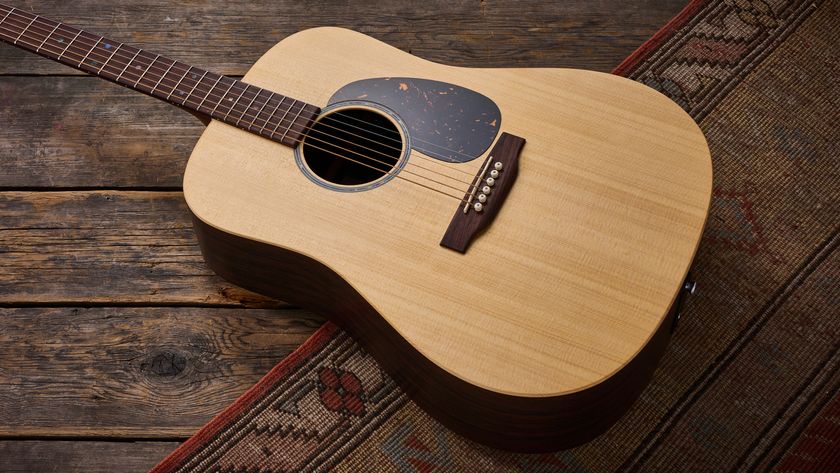
“While it might not be the vintage D-28 of your dreams, this is a Martin you can be proud of”: Martin X Series Remastered D-X2E Brazilian review

